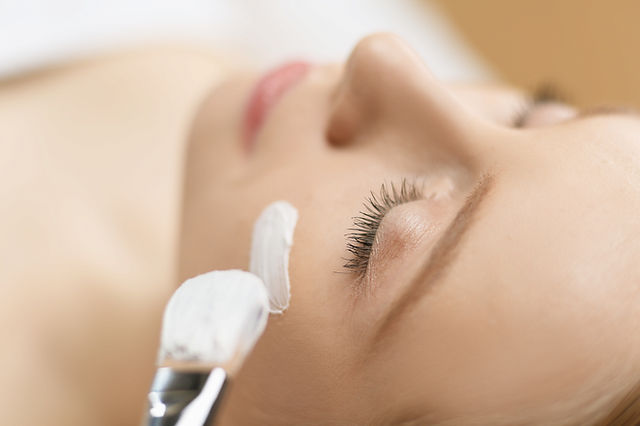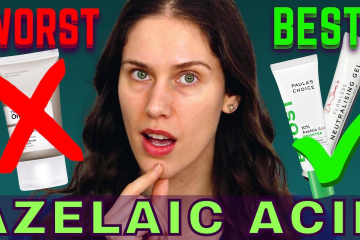Table of Contents
- Introduction to Chemical Peels
- How Chemical Peels Work
- Types of Chemical Peels
- Benefits of Chemical Peels
- Potential Side Effects and Considerations
- Who Can Benefit from Chemical Peels?
- Preparing for a Chemical Peel
- Aftercare: Post-Peel Care Tips
Introduction to Chemical Peels
Chemical peels have emerged as a favored skincare treatment among those seeking to enhance their skin’s appearance with minimal downtime. These procedures involve applying a specialized chemical solution to the skin, which induces controlled exfoliation. The result is often a fresher, more youthful-looking layer of skin.
Chemical peels’ versatility makes them suitable for addressing various skin issues. From reducing acne and hyperpigmentation to minimizing signs of aging, these treatments provide a customizable solution for many dermatological needs. Understanding their mechanism and benefits becomes crucial for anyone considering this rejuvenating procedure as it becomes more popular.
How Chemical Peels Work
The effectiveness of chemical peels comes from their capacity to speed up the skin’s natural exfoliation process. By using acids that softly exfoliate the top layers of the skin, these therapies encourage the deeper layers to renew themselves. This renewal enhances skin texture and tone while also boosting collagen production, an essential element for preserving skin’s elasticity and youthful appearance.
In a chemical peel, the active ingredients—such as alpha hydroxy acids (AHAs), beta hydroxy acids (BHAs), and trichloroacetic acid (TCA)—work synergistically to loosen and remove dead skin cells. This reduces surface imperfections and prepares the skin to absorb therapeutic products more effectively. With an increasing interest in such treatments, many people search for services offering a chemical peel near me, ensuring convenient access to professional care from studios like Franklin Skin Studio. Understanding this process helps clients make informed decisions and have realistic expectations of the peeling outcomes.
Types of Chemical Peels
Chemical peels are classified into three main categories based on their intensity and the depth at which they affect the skin. Recognizing these differences is critical to choosing the right peel for skincare goals and concerns.
- Superficial Peels: Also known as “lunchtime peels,” these use mild acids like AHAs to exfoliate gently. They’re ideal for all skin types and target superficial concerns such as mild discoloration and rough texture. The minimal downtime of these peels makes them a popular choice for those looking for a quick skin refresh.
- Medium Peels: By using TCA, medium peels delve deeper into the skin, tackling more prominent concerns like age spots and wrinkles. Although recovery takes more time than with superficial peels, the outcomes frequently show notable enhancements in skin tone and clarity.
- Deep Peels: Designed for severe skin issues, deep peels employ more vital acids to target deep-set wrinkles and precancerous growths. These peels offer the most dramatic results but require extended recovery periods and more excellent post-procedure care.
Benefits of Chemical Peels
Chemical peels boast a range of benefits that extend beyond mere aesthetic improvements. For individuals dealing with persistent skin issues, they offer a non-invasive solution to achieve clearer, smoother skin. A major benefit is their capability to enhance acne scars, an issue that can affect self-confidence. By encouraging quick cell regeneration, peels can greatly reduce the appearance of acne scars over time, resulting in a more uniform skin tone.
Additionally, chemical peels reduce fine lines, particularly those around the mouth and eyes. They also mitigate sun-induced damage, correct hyperpigmentation, and enhance skin’s texture and tone. Chemical peels promote collagen production, leading to a firmer and more youthful look, making them a valuable option for individuals seeking to combat visible aging signs without the need for invasive treatments.
Potential Side Effects and Considerations
While chemical peels are generally safe, they can have temporary side effects, which vary depending on the type and depth of the peel. Common reactions include redness, stinging, and peeling, often part of the skin’s natural healing process. More intense peels may heighten these effects, sometimes leading to pigmentation changes or, in rare cases, scarring.
Potential candidates should assess their skin type and sensitivity. Consulting with a dermatologist helps determine the correct type of peel and manage expectations about the process and outcomes. By doing so, individuals can minimize risks and maximize the rejuvenating benefits of their chosen treatment.
Who Can Benefit from Chemical Peels?
Chemical peels are not one-size-fits-all; their effectiveness depends on the individual’s skin condition and desired outcomes. They are particularly beneficial for those dealing with acne, uneven skin tone, or early signs of aging. However, while most people can safely undergo superficial peels, medium and deep peels require a more cautious approach, emphasizing personalized assessment.
Aspects like skin type, existing health issues, and previous responses to skincare therapies need to be taken into account thoughtfully. A professional assessment can offer valuable information on the most appropriate therapies, helping individuals achieve optimal outcomes while reducing the risk of complications.
Preparing for a Chemical Peel
Adequate preparation enhances the results of a chemical peel. It’s advised to pause using any exfoliating or keratolytic agents, like retinoids, at least a week before the procedure. Ensuring the skin is well-moisturized improves barrier function and resilience, aiding recovery.
Before the treatment, healthcare providers often recommend a tailored skincare regimen to prime the skin for the peel. This strategic preparation is essential for achieving optimal results and enhancing the overall experience.
Aftercare: Post-Peel Care Tips
Post-peel care is crucial to the healing process, as proper management can significantly influence the treatment’s success. Keeping the skin well-hydrated with gentle, non-irritating products fosters healing and reduces the likelihood of irritation.
Sun protection is paramount post-peel, as newly exposed skin is susceptible to UV radiation. To guard against sun damage while promoting uninterrupted healing, broad-spectrum sunscreen is incorporated into the daily skincare routine. Establishing a proper skincare routine post-peel ensures that the procedure’s benefits are maintained long-term, allowing individuals to enjoy their rejuvenated skin.




